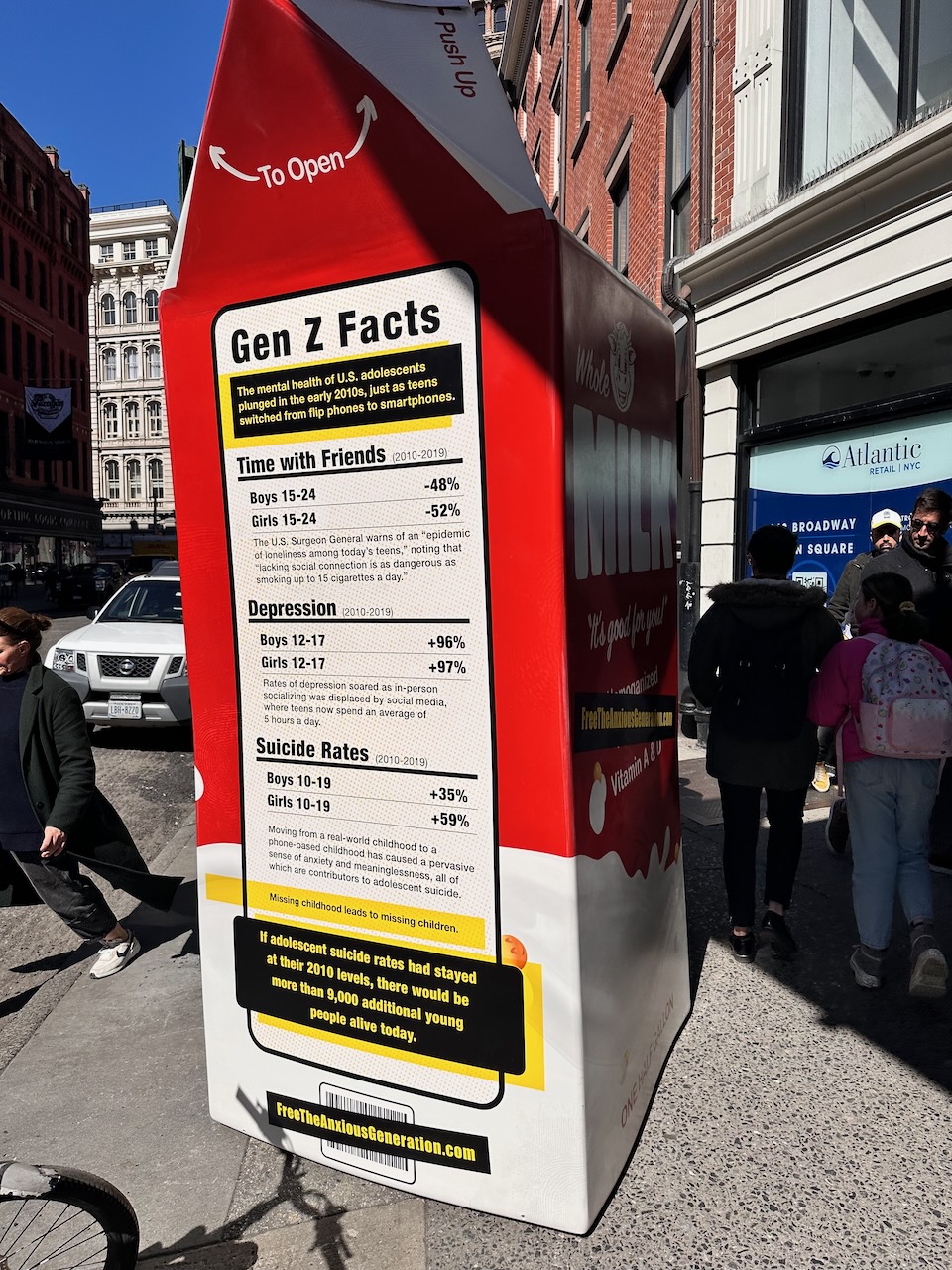Pure and Modern Milk
In many of the books we've read this semester, at the start I’m not sold by the premise that the topic is worth investigating for a few hundred pages. I quickly go all-in and leave the book feeling unhappy with the many sides of the topic the author couldn’t fit into two hundred pages. In this book, the ice cream chapter felt thin on substantive argument, while the latest thirty years (in which milk market change has accelerated from the periods more investigated) were crammed into an epilogue, with stories such as rBST providing narrative of more lasting importance. I was surprised the book didn't directly face the enduring connection to children: the cultural perception of milk being for kids, Michelle Obama’s school lunch rules, the Got Milk ad campaign, the national cheese stockpile, and federal subsidizing of dairy farms. The book chose to focus on milk and skim milk and butter and ice cream over other dairy products, though personally I purchase oat products for fluid milk and ice cream (while defaulting to olive oil for cooking), even if I continue buying cow-based cheese and yogurt. (Gen Z doesn’t drink skim milk; my grandma does.)
Milk’s cultural position has changed dramatically in the decade since it was published, and the book didn’t even gesture at the enormous water, air, and methane/carbon pollution from modern dairy farming as relevant, or how cheese and yogurt are marketed to keep vegetarians connected to dairy/cattle industries, and (following its publication) rise of plant-based milks. My increasingly-disappointing Senator from Pennsylvania, John Fetterman, last year made his crowning achievement demoting the labeling of plant-based products to no longer be “milk.” (Top of my list for political needs in America right now.)
The thesis of this book argues milk/dairy as a product of a second nature. As laid out in chapter two: “butter was not wholly natural or technological, nor was its purity rooted simply in its pastoral origins or industrial safeguards. At every stage, butter was a hybrid of natural and cultural influences.” I was reminded of the incredible Netflix original series Russian Doll, in which Ruth Brenner says, “Holding two incompatible ideas in your head at the same time and accepting both of them, that’s the best of being human.” Consumers are under no illusion milk is coming from a farmer hand-milking one cow at sunrise into a wooden bucket, and depend on the health monitoring of livestock, pasteurization, homogenization, grading, packaging, and other scientific/industrial processes involved in producing it. The thesis fit the historical narrative presented, though I wished it connected to the world more broadly: other conceptions of second nature, how dairy fits into the modern agriculture economically, climate connections.
Milk continues to pervade culture, regularly enforced by corporate advertising (see “Got Milk”). At Union Square recently, NYU Stern professor Jonathan Haidt’s book promotion involved a 10ft milk carton with nutrition facts about Gen Z depression he links to phone use provided a cultural shortcut for talking about young people. I’ve long been skeptical of milk claims, and though I’ve embraced several plant-based alternative products, the questionable science around sugar in oat milk and the Chinese government ownership stake in my preferred brand (Oatly) keeps me guessing.
